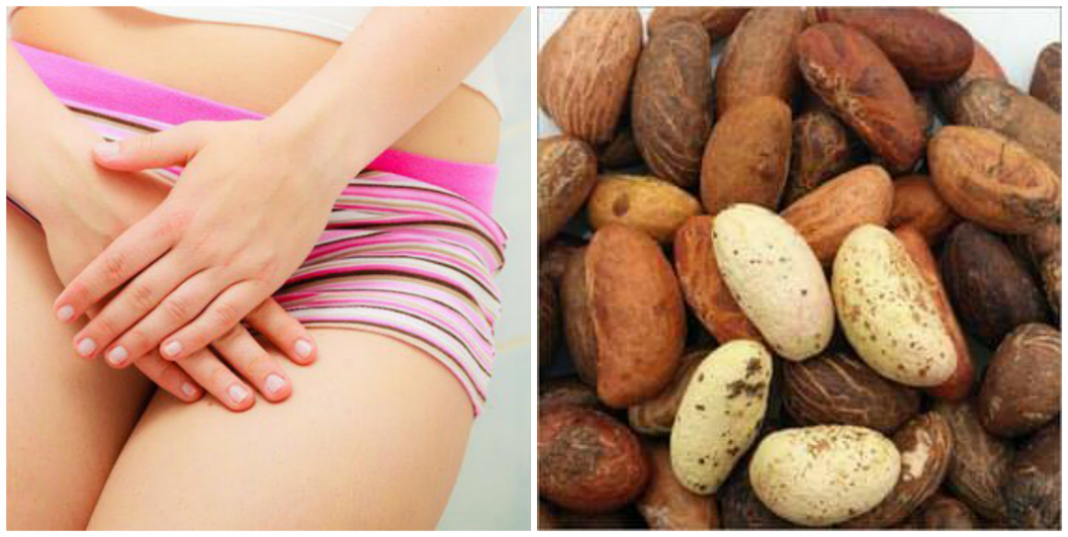Can bitter kola cure yeast infection?
To answer this question, I need to clarify some grey areas concerning vaginal thrush/vaginal candidiasis/yeast infection.
I’ve been seeing a lot of false information circulating on here, regarding yeast infections. Here’s what you need to know…
Candidiasis is an infection caused by a yeast (type of fungus) called Candida, which normally lives inside the body (in places such as the mouth, throat, gut, and vagina) and on skin without causing any problems.
Sometimes Candida can multiply and cause an infection if the environment inside the vagina changes in a way that encourages its growth. Candidiasis in the vagina is commonly called a “vaginal yeast infection” or “vaginal thrush.”
Just so we’re clear, a yeast infection is not considered as an STI/STD. Although sexual contact can spread it, virgins or women that aren’t sexually active can also develop yeast infections.
Symptoms of vaginal candidiasis include:
• Vulvovaginal itching
• Vulval swelling/rash
• Burning during urination/sex
• Abnormal vaginal discharge (usually a thick whitish discharge – often described as a cottage cheese texture) with NO foul smell associated.
Although most vaginal candidiasis is mild, some women can develop severe infections involving redness, swelling, and cracks on the skin of the vulva or in the wall of the vagina.
The fungus Candida is a naturally occurring microorganism in the vaginal area. Lactobacillus bacteria keeps its growth in check.
But if there’s an imbalance in your system, these bacteria won’t work effectively. This leads to an overgrowth of yeast, which causes these symptoms.
Women who are MORE likely to get yeast infections include those who:
• Are pregnant
• Use hormonal contraceptives
• Have uncontrolled Diabetes
• Have a weak immune system (e.g due to HIV or medicines that weaken the immune system)
• Are taking or recently took antibiotics.
Yeast infections are simple to diagnose. Your doctor will ask about your medical history. The next step is a pelvic exam. Your doctor will examine your vaginal walls and cervix. They’ll also look at the surrounding area for external signs of infection.
Depending on what your doctor sees, the next step may be to collect some cells from your vagina. These cells go to a lab for examination. Lab tests are usually ordered for women who have yeast infections on a regular basis or for infections that won’t go away.
Each yeast infection is different, so your doctor will suggest a treatment that’s best for you. Treatments are generally determined based on the severity of your symptoms.
For simple yeast infections, your doctor will usually prescribe a regimen of an antifungal cream, tablets or pessaries.
Common medications include:
• Clotrimazole (Lotrimin)
• Miconazole (Monistat)
• Fluconazole (Diflucan)
• Itraconazole (Canditral)
Personally, I like to prescribe:
• A single dose of oral Fluconazole
• Either a single Clotrimazole vaginal pessary or 6 pessaries to be used for 6 days.
• A clotrimazole/miconazole based cream to apply on the itchy vulva.
This regimen works well for my patients.
You can try to treat vaginal yeast infections with natural remedies if you’d like to avoid taking prescription medication, but these aren’t as effective or reliable as the indicated medications, so I would not recommend. Lol.
The one thing I CAN recommend though is eating plain yoghurt! Especially if you’re prone to recurrent yeast infections. Add yoghurt (may be eaten with fruits of your choice) to your diet to keep your body’s flora at bay. You may also take supplements that contain lactobacillus.
While vaginal yeast infections are more common, it’s possible for men to get yeast infections too. When it affects the penis, this is known as a penile yeast infection. The groin area is especially prone to Candida overgrowth because of skin folds and moisture.
Still, penile yeast infections are most commonly caused by having unprotected intercourse with a woman who has the infection too. You can help prevent a yeast infection by wearing condoms during sex… or avoiding sex until your partner is completely treated.
Lastly, here are a few tips to help you avoid developing a yeast infection…
DOs:
• Wear cotton underwear
• Eat yoghurt or take lactobacillus supplements
• Replace feminine products frequently
• Wash underwear using hot water
DONTs:
• Don’t douche
• Don’t use feminine deodorant or scented tampons or pads
• Don’t sit around in wet clothing, especially bathing suits
• Don’t frequently wear tight pants, pantyhose, tights or leggings.
Now to answer, your question..
Can bitter kola cure yeast infection?
No. Some women believe that doing sitz bath with bitter kola soaked in hot water will help them cure yeast infection…But this is not true.Steaming with bitter kola soaked in hot water will not treat your vaginal thrush.

This is a very broad topic and I don’t want to go on and on, so I’m open to any questions you may have at this time.
But this is basically some of the most important info you need to know about yeast infections.
Thank you for your time.
Sources:
Emma Stone
www.nimedhealth.com.ng
























